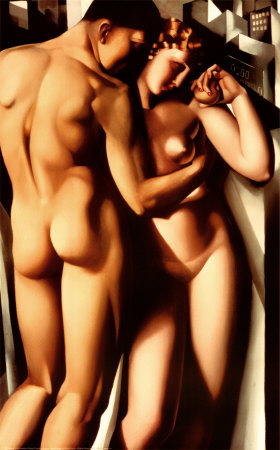Image and Glory
 Following a masterful and beautiful explanation of Israel’s priestly glory, Alastair Roberts writes:
Following a masterful and beautiful explanation of Israel’s priestly glory, Alastair Roberts writes:
In 1 Corinthians 11:7 we encounter a verse that many might find perplexing.
For a man indeed ought not to cover his head, since he is the image and glory of God; but woman is the glory of man.
I believe that careful attention to the logic of this verse is absolutely crucial to unlocking the puzzle of the difference between the female helper apostle, and the male helper apostle.
If one were reading without paying too much attention, one might fall into the trap of reading ‘man … is the image and glory of God; but woman is the image and glory of man.’ However, the text does not say that the woman is the image of the man. The woman is the glory of the man, but not his image. We will return at a later point to the question of whether women are also the images of God.
Who then is the image of the man? The image of the man is the priestly son. Eve was the glory of Adam, but it was Seth who was his image, the expression of his authority in the world: ‘And Adam lived one hundred and thirty years, and begot a son in his own likeness, after his image, and named him Seth’ (Genesis 5:3).The blessing of the father is given to the sons who bear his image in the world. The firstborn’s blessing generally involves the laying on of hands. As the father leans upon the head of his son, he impresses his image upon him. His son then represents him and his authority in the world. The chief blessing of the right hand naturally belongs to the firstborn son, who is the chief image of the father. In Genesis 48:12-22, for example, we see Isaac giving Joseph the firstborn’s double portion (v.22), through laying his hand on both of Joseph’s sons’ heads (but reversing their birth order), thereby giving Joseph two tribal portions in Ephraim and Manasseh in contrast to the single portions received by his brothers.
As N.T. Wright and others have observed, Scripture’s use of the concept of ‘image’ should be understood as the visible representation or expression of a person’s authority and rule. The conceptual connection between image and authority is a tight one, and sheds considerable light on our current questions.
The relationship between image and sonship is clear elsewhere in Scripture, especially in references to the person of Christ. For instance, in Colossians 1:15 we read of Christ: ‘He is the image of the invisible God, the firstborn over all creation.’ It is the son who represents – who is the embodiment – of the authority of his father. The man’s possession of a son is his possession of authority, much as having a wife is having glory. Hebrews 1:2ff. reveals the same connection between the firstborn, image, and authority: as God’s image and firstborn Son, Christ is God’s strength and authority at work in the world.
All of this leads to an important conclusion: women cannot represent, or image, the authority of the man, as that is not the form of representation for which they were created.
Alastair Roberts, Representation and Ordination.
Art: Adam and Eve by Tamara de Lempicka

























